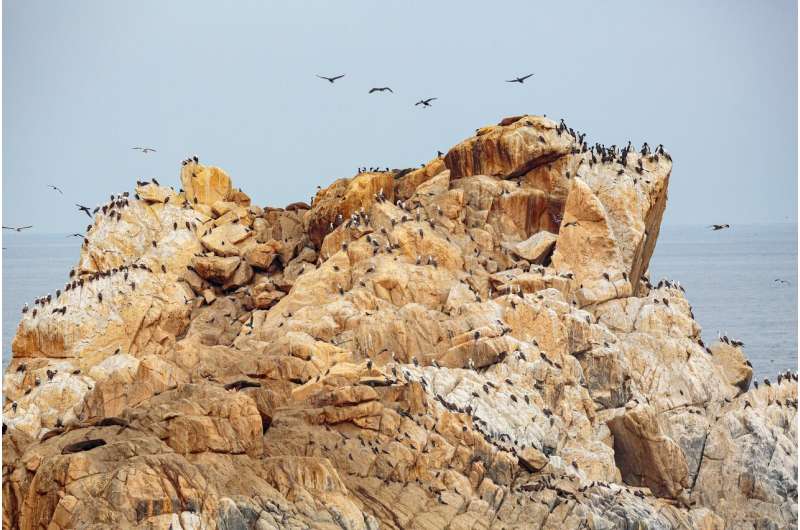Seabird guano fertilizer drove robust agriculture in Atacama Desert from AD 1000

Seabird guano fertilizer—also known as 'white gold'—could have been responsible for the highly productive agricultural systems of pre-Incan civilization in the otherwise arid climate of the Atacama Desert. These findings, reported in a paper published in Nature Plants, shed light on the development of the large population centers and society between AD 1000 and AD 1450 in what is now northern Chile.
Nestled in the driest desert in the word, robust agricultural systems supported pre-Incan civilizations for centuries. The pre-Hispanic archeological record of northern Chile has preserved large quantities of diverse crops that suggests a level of agricultural success that has defied explanation.
Francisca Santana-Sagredo and colleagues analyzed complete specimens of maize, chili pepper, gourd, beans, quinoa and wild local fruits from the Atacama Desert dated between 1000 BC and AD 1800. They found a substantial increase in nitrogen isotope values from around AD 1000. Maize was the most affected, with nitrogen isotope values as high as +30 parts per thousand. The authors also analyzed more than 800 published human isotope values from the same location and date range and found that human bone collagen followed a similar trend. It also showed a significant increase in carbon isotope values, which suggests an increase in the consumption of maize at the same time.
The authors attribute this shift to extremely high nitrogen isotope values—the highest in the world for archeological plants—to the use of seabird guano as crop fertilizer. They argue that the use of this fertilizer had strong implications for the intensification of agriculture and population growth, as well as for social complexity, which is typically unusual within such extreme environmental conditions.
More information: Francisca Santana-Sagredo et al. 'White gold' guano fertilizer drove agricultural intensification in the Atacama Desert from ad 1000, Nature Plants (2021). DOI: 10.1038/s41477-020-00835-4
Journal information: Nature Plants
Provided by Nature Publishing Group





















